10/4/10 A picture of a 500 foot turbine is worth 1000 words: Fifty story turbines go up in Town of Glenmore, Brown County, Wisconsin AND Rock County wind farm plans scrapped AND New Study says industrial scale wind farms affect temperature: how will this affect ag land, wildlife and natural habitat?
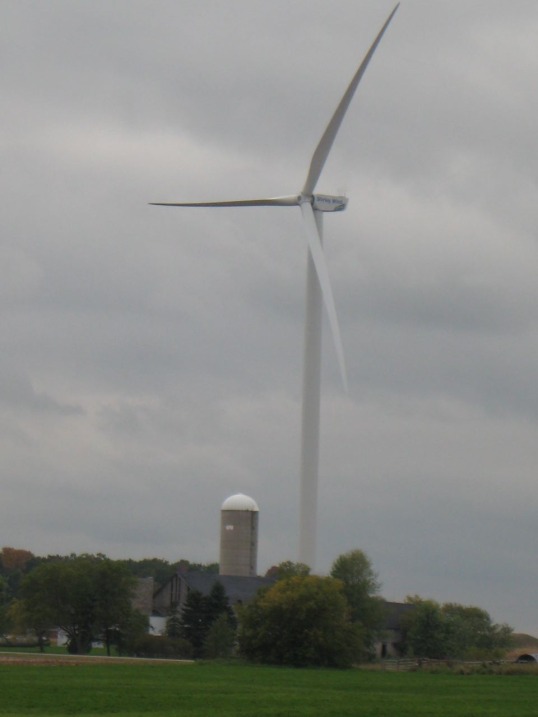
At 500 feet, the turbines going up in the Town of Glenmore in Brown County are the tallest in the state. Those in the wind industry continue to insist the presence of wind turbines has no effect on property values.
ACCIONA ENDS PLANS FOR WIND FARM IN MAGNOLIA
October 4, 2010
By Gina Duwe
MAGNOLIA TOWNSHIP — Plans that once called for up to 67 wind turbines dotting the countryside of Magnolia Township have ended.
An official with Acciona, a global energy company, confirmed that it has decided not to develop the EcoMagnolia project.
“That’s a case where I think … it was not an adequate wind resource for us to commit our full development for the project area,” said Chip Readling, lead developer for projects in several states, including Wisconsin.
Data gathered from a meteorological tower that stood for about three years at County B and Highway 213 showed “the project did not align well with our business goals,” he said.
“(It was) just a matter of wind,” he said.
Acciona still owns the project rights.
Plans are not as certain to the north.
The met tower that’s been up for nearly two years in Union Township will be taken down after the corn surrounding it is harvested.
The company’s meteorological team will analyze the data gathered from that tower—at County C and Highway 103—and decide whether to pursue a project, Readling said.
“We think it’s certainly a site we want to continue to watch,” he said.
If the company decides to move forward, the next step would be putting up a taller met tower—262 feet tall—to record wind speeds at the height of a turbine hub.
Readling said the company had no timeline and was not to the point of having landowners sign contracts.
He also said he could not release any of the wind speeds from either of the met towers.
In 2008, EcoEnergy said the average wind speed was 14.7 mph, measured at 197 feet on the Magnolia tower. The average was for a year starting in April 2007.
EcoEnergy first started the development of the Union project to include three turbines west of Evansville with Wisconsin Public Power buying the power produced for sale to Evansville Water and Light customers.
Acciona bought the rights for the Union and Magnolia projects from EcoEnergy in 2007.
Lost in the shuffle of the sale was the town permit for the Union met tower. The permit expired last fall, and Acciona failed to renew it. The town and company settled on a $6,000 fine for being out of compliance. Acciona officials are finalizing paperwork to make the payment, Readling said.
Reaction
Tom Drew, the landowner who hosted the met tower in Magnolia, said he hadn’t heard anything from the company since spring.
The plan to end the project was news to him.
He had not signed any contracts beyond the met tower, he said, and wasn’t really disappointed about the project not moving forward.
“To me, it was just nice clean energy,” Drew said. “That part is what I looked at. I never thought it would be any big windfall for anybody.”
When the project first started, his wife, Laurie, worked part time for about 18 months for EcoEnergy, setting up the company booth at events. She said she did it “to get a pulse on the company.”
Spring Valley resident Lynda Kawula doesn’t find relief in Acciona’s plan for Magnolia. Kawula and her husband, Kevin, live on the township border and feared having to move if turbines went up too close to their house.
“I don’t think it’s over yet,” she said.
Her research about wind turbines led her to start a website, betterplan.squarespace .com, advocating against wind farms that are sited too close to residents.
“If they could get these things sited correctly, everybody would come out happy,” she said.
Since the development plans emerged, the Kawulas have become engrossed in local and state government, have followed and taped the meetings of the state wind siting council’s rule-making process and visited with residents living on wind farms.
She plans to write a book about the wind industry in Wisconsin.
She has spent 10 nights in three different locations among two wind projects in the state.
“The relief part is funny,” she said. “Because I’m so tied up with people who are living with the turbine (problems) now, even if it’s not coming here right now, I’m still concerned about them and the little help they’re getting.”
WIND FARMS CAN CHANGE THE WEATHER
October 4, 2010
By Doyle Rice
Large wind farms can influence local air temperatures, according to a new study published today in the Proceedings of the National Academy of Sciences.
The data was collected over seven weeks in the summer of 1989 at the San Gorgonio wind farm near Palm Springs, Calif.
The study revealed that the wind farm caused the local area to cool down during the day and warm up at night, according to authors Somnath Baidya Roy and Justin J. Traiteur of the University of Illinois.
For instance, on one day of the study, the temperature at 1:00 p.m. upwind of the wind farm was about 100 degrees, but was about 93 degrees downwind, due to the effects of the windfarm.
The authors theorize that the turbulence generated by the turbine rotors, which can enhance the vertical mixing of warm and cold air, led to the temperature changes.
"To the best of our knowledge, this is the only meteorological field campaign conducted in an operational wind farm," the authors write in the study. "The wind farm consisted of 23-meter-tall turbines with 8.5-meter-long rotor blades arranged in 41 rows that were spaced 120 m apart."
Because many wind farms are located on agricultural land, the scientists say, local weather changes can affect crop productivity.
And what can be done? "The impacts of wind farms on local weather can be minimized by changing rotor design or by siting wind farms in regions with high natural turbulence," the study found. "Using a 25-year-long climate dataset, we identified such regions in the world. Many of these regions, such as the Midwest and Great Plains in the United States, are also rich in wind resources, making them ideal candidates for low-impact wind farms."
The authors add that "wind power is on the verge of explosive growth, most of it being in the industrial sector consisting of large wind farms."
As USA TODAY reported last year, wind projects are being proposed near the Texas Gulf, the Atlantic Coast, the Great Plains and Upper Midwest.
President Obama said in April 2009 that he would allow turbines along the Atlantic as one way to help meet a goal by environmentalists and the industry of generating 20% of the nation's electricity through wind by 2030. Currently about 1% of U.S. power comes from wind, according to the American Wind Energy Association.
10/3/10 Save the Date: Wind Rules hearing announced for OCT 13 at the capitol AND Where did all the bailout money go? Goldman Sachs and the imaginary wind farm
On October 13th, there will be a full public hearing at the capitol because of questions raised regarding the Public Service Commission's new wind siting rules for the state of Wisconsin.
The public is encouraged to attend and to provide testimony regarding specific concerns about the rules.
PUBLIC HEARING
Senate Committee on Commerce, Utilities, Energy, and RailThe Senate Committee on Utilities, Energy and Rail will hold a public hearing on Wednesday, October 13, 2010 11:00 AM, 411 South at the State Capitol in Madison relating to Clearinghouse Rule 10-057 siting of wind energy systems.
Senator Jeffry Plale, Chair
ANOTHER CHAPTER OF "WIND DEVELOPERS BEHAVING BADLY"
GOLDMAN'S MYSTERIOUS WIND FARM
Senior Editor,
The financing of a "clean energy" wind farm was the focus of the advertising campaign Goldman Sachs initiated yesterday. We thought it made sense to do a little investigation into the farm.
 |
|
Source: Goldman Sachs
|
We wanted to investigate whether Goldman's claims that its work for a renewable energy company has been good for the environment, good for local businesses and communities, and for good for local employees hold up.
One problem: Goldman won't tell us which wind farm it is referring to.
Initially we suspected that this might mean the renewable energy company was more of an abstraction than a reality. Surely, Goldman has done investment banking work for tons of such companies. So maybe the vampire squids weren't actually referring to any one project.
The Goldman spokesman, however, told us that the advertisement is referring to a particular project of a client. But he would not reveal which client or the location of the wind farm.
So right now the identity of the wind farm Goldman used to initiate its campaign to repair its image remains cloaked in secrecy. And its claims about helping local business, communities and employees are unverifiable.
10/3/10 Should wind developers be licensed before they start signing up landowners? Do the new wind rules provide enough protection for landowners from unlicensed wind developers?
Click on the image above to hear Wind Siting Council members Tom Meyer and Doug Zweizig express concerns about wind developer licensing and accountability issues regarding contracts and leases, and why there should be more protection for Wisconsin landowners built into the rules.
On October 13th, there will be a full public hearing at the capitol because of questions raised regarding the Public Service Commission's new wind siting rules for the state of Wisconsin.
Senate
PUBLIC HEARING
Committee on Commerce, Utilities, Energy, and RailThe Senate Committee on Utilities, Energy and Rail will hold a public hearing on Wednesday, October 13, 2010 11:00 AM, 411 South at the State Capitol in Madison relating to Clearinghouse Rule 10-057 siting of wind energy systems.
Senator Jeffry Plale, Chair
CLICK HERE TO DOWNLOAD CLEARING HOUSE RULE 10-057
10/2/10 What to expect when you're expecting wind turbines that are 50 stories tall
TOWN OF GLENMORE- Construction continues on the Shirley wind project in Brown County. Once completed, the 497 foot turbines will be the tallest in the state.
The photos below were provided by the Brown County Citizens for Responsible Renewable Energy (bccrwe.com)
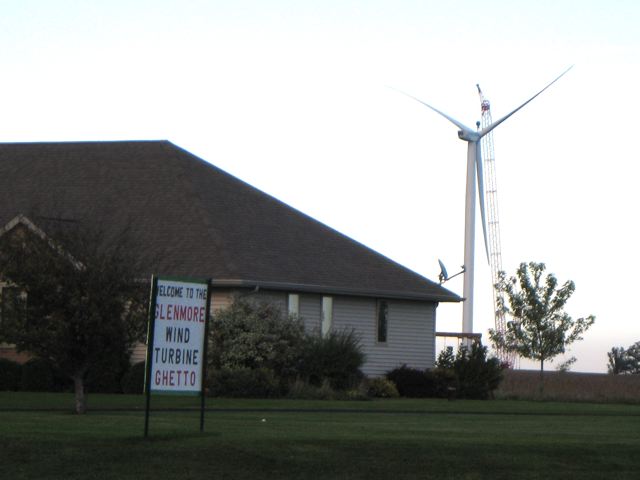

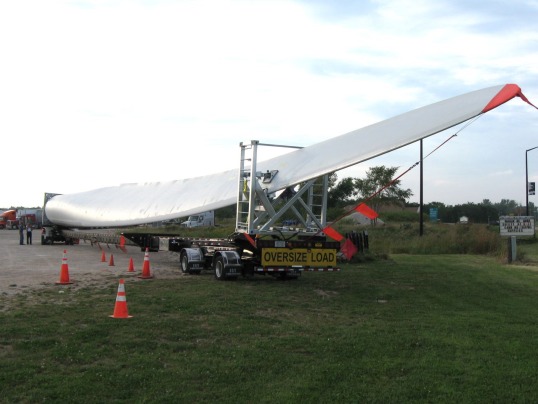
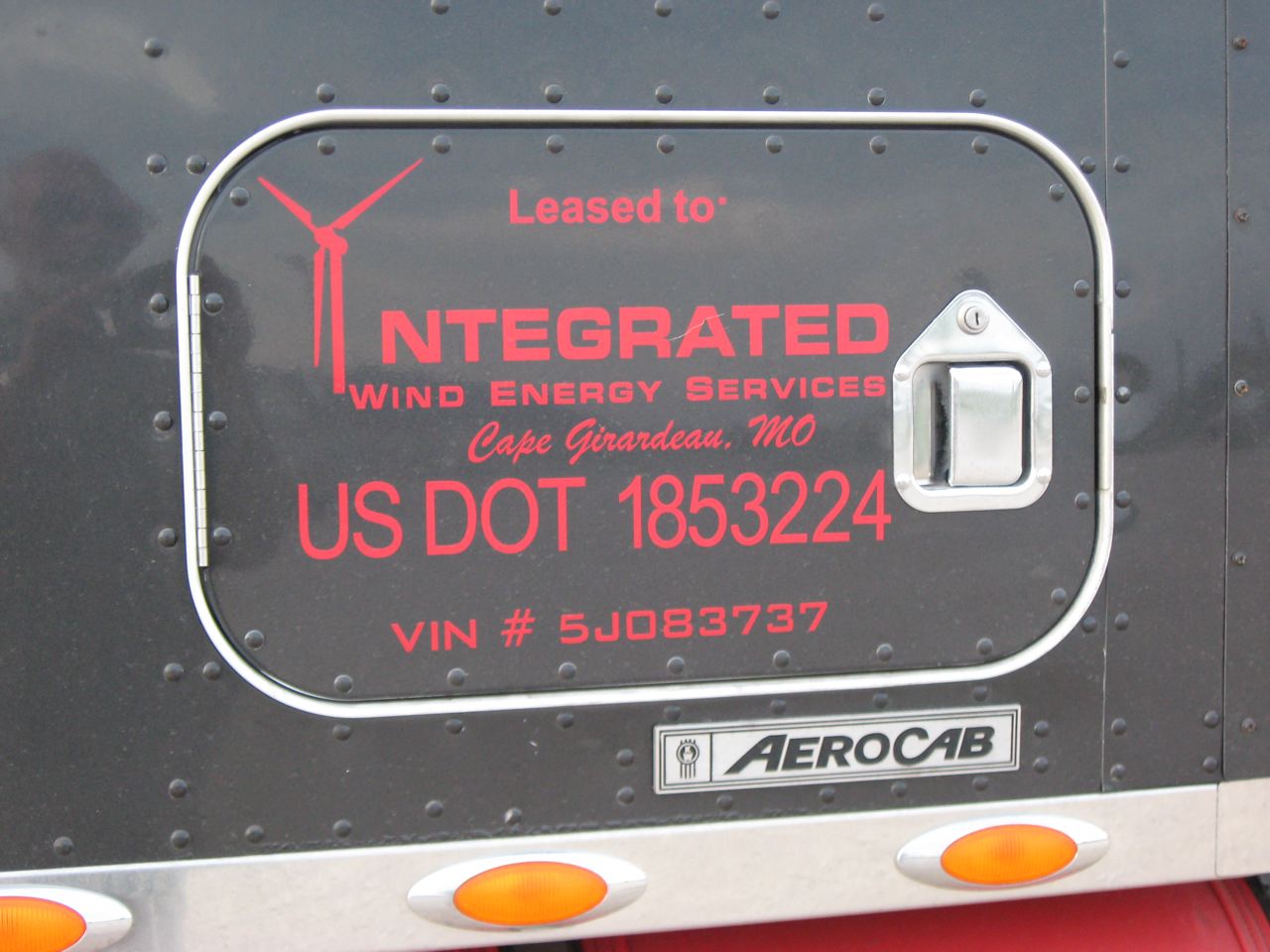 Truck from Missouri
Truck from Missouri Truck from Utah
Truck from Utah From Oklahoma
From Oklahoma

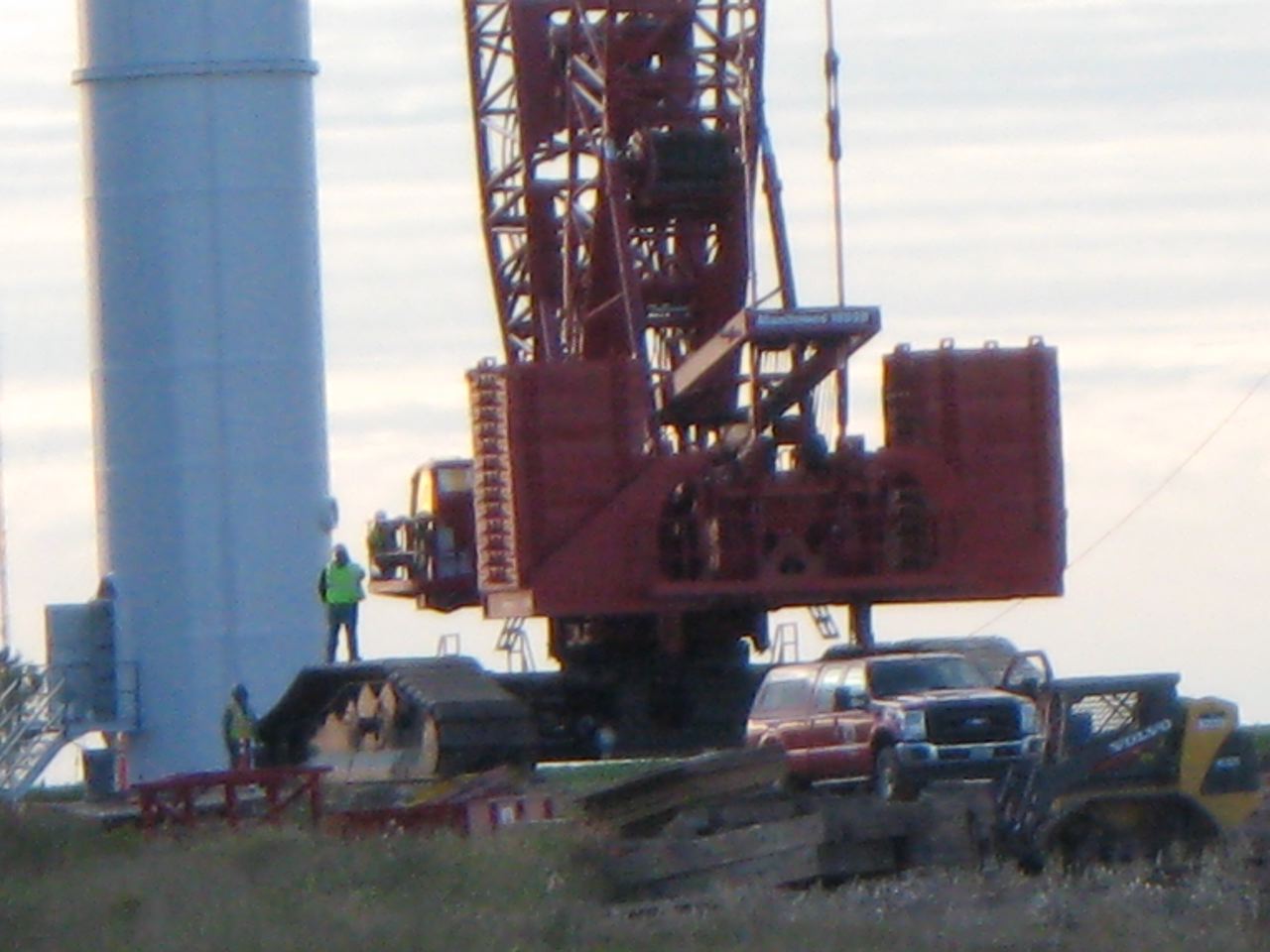
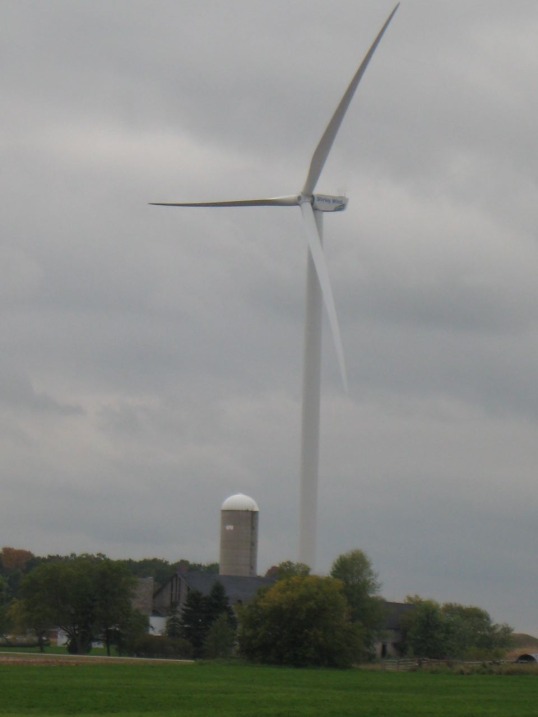
10/1/10 Save the date! Senate hearing on Wind Siting Rules set for October 13th AND Coming to your county soon? How many 400-500 foot tall turbines will it take to satisfy wind developers in Wisconsin? AND How does eminent domain fit into the wind development picture?
Senate
PUBLIC HEARING
Committee on Commerce, Utilities, Energy, and RailThe Senate Committee on Utilities, Energy and Rail will hold a public hearing on Wednesday, October 13, 2010 11:00 AM, 411 South at the State Capitol in Madison relating to Clearinghouse Rule 10-057 siting of wind energy systems.
Senator Jeffry Plale, Chair
CLICK HERE TO DOWNLOAD CLEARING HOUSE RULE 10-057
Correction: The Butler Ridge wind project is in Dodge County, south of the Fond du Lac County line.
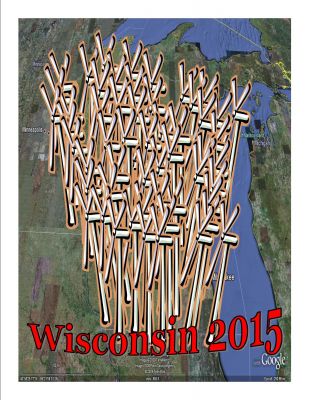
Midwest must almost double wind power production to meet 2025 goal
SOURCE: Wisconsin State Journal:
By JUDY NEWMAN
September 30, 2010
Wisconsin and four other Upper Midwest states will need 15,000 megawatts of wind energy by 2025 — or about 8,600 megawatts more than already available — to fulfill their renewable energy goals, a study says.
In addition, it will cost an estimated $3 billion to build the transmission lines that will hook the wind power into the electric transmission grid.
The 15-page report, issued Thursday by a committee representing Wisconsin, Iowa, Minnesota and North and South Dakota, identifies 20 renewable energy zones within the five states, windy enough to serve as a power resource.
It also suggests six transmission corridors “that would efficiently move energy from these wind zones to customers, and serve as a backbone for a variety of future development needs in the region, and potentially further east.”
Two of the possible corridors for the high-voltage transmission lines extend into Wisconsin, including one that would run from Iowa to Madison.
The committee, called the Upper Midwest Transmission Development Initiative, will continue to meet to talk about potential cost allocation and other factors. No specific routes for the new transmission lines have been proposed yet.
However, at least three transmission companies have outlined possible projects with similar goals.
WIND TURBINES IN THE NEWS:
WYOMING WIND TASK FORCE FAVORS EMINENT DOMAIN LIMITS
Source: Bloomberg Business Week
September 30, 2010
By Bob Moen
"If we can restrict eminent domain in any way I think our landowners support that because we believe these issues should be addressed through private negotiations and agreement, not through holding a gun to somebody's head and threatening eminent domain, which basically forces the landowner to take whatever the condemner is offering because they have the greater power,"
Private companies that want to string small power lines from wind turbines to the main power grid wouldn't be able to seize land from Wyoming landowners under a recommendation made by a task force Thursday.
The Wind Energy Task Force voted 5-4 to deny the power of eminent domain to private companies building so-called collector lines for wind projects in the state. Eminent domain is the forced acquisition of private property for public use and has been used to build railroads, pipelines and other projects.
At the same time, the panel recommends that regulated public utilities retain the power of eminent domain. Public utilities are subjected to more scrutiny from state Public Service Commission regulations and oversight.
Task force chairman Rep. Kermit Brown, R-Laramie, said the panel's eminent domain recommendation seeks fairness for landowners whose land is needed only for small collector lines.
"All he gets is one lump sum payment for the fair market value of what little property they need and he never sees another dime," Brown said.
Landowners with the wind turbines on their land pocket monthly checks from the wind producer, Brown said.
The task force's recommendations go the Legislature, which would have to approve any change in state eminent domain law.
Wyoming imposed a moratorium on the use of eminent domain for collector lines that went into effect in March and will last through June 30, 2011. It's meant to buy some time for Wyoming citizens and policymakers to examine the issue.
The Legislature last made changes to the state's eminent domain law in 2007 mainly because of complaints from landowners who felt run over by booming oil and gas development. The process proved contentious.
Brown still refers to the 2007 debate as the "eminent domain wars."
"They're just tough, tough issues every time they come up," he said.
Jill Morrison, an organizer with the Powder River Basin Resource Council, which advocates for private landowners, applauded the panel's decision.
"If we can restrict eminent domain in any way I think our landowners support that because we believe these issues should be addressed through private negotiations and agreement, not through holding a gun to somebody's head and threatening eminent domain, which basically forces the landowner to take whatever the condemner is offering because they have the greater power," Morrison said.
Cheryl Riley, executive director of the Wyoming Power Producers Coalition, declined immediate comment on the task force's action until she can study its recommendation.
Brown said he couldn't say how the task force's recommendations might affect the growing wind industry in Wyoming.
The dozens of wind farms that have been built or are being proposed in the state so far have hugged the main power transmission lines that cross the state. Building wind farms farther away from the grid will mean erecting many more of the collector lines.
Wyoming is one of the most reliably windy inland areas of the United States, and its wind energy potential has attracted wide interest in recent years.